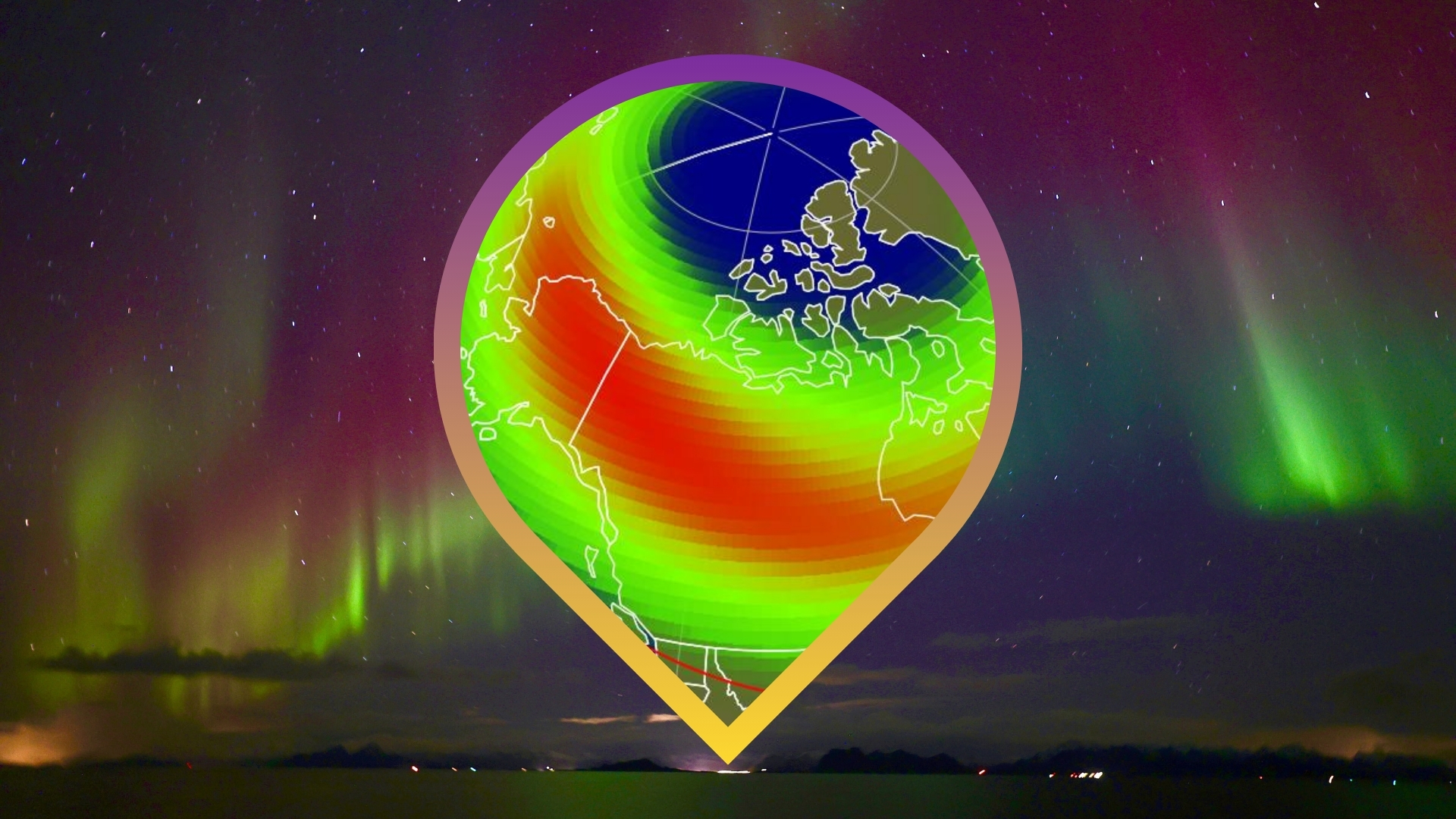South African telescope captures stunning image of radio galaxy
Cosmic threads, ribbons and rings are caused by radio emissions from matter falling into the black hole at the center of the galaxy.

A stunning new image from the South African MeerKAT telescope captures powerful radio emissions woven through space.
The radio emissions emanate from an enormous rotating black hole that lies at the center of an elliptical galaxy known as IC 4296. Energy released by matter falling into the black hole generates two radio jets of high energy gas on opposite sides of the galaxy — creating what is also known as a double-lobed radio galaxy.
Using the South African Radio Astronomy Observatory's (SARAO) MeerKAT telescope, located in the southwest Karoo region of the country, researchers detected the radio waves from IC 4296, along with other unique cosmic features that may reveal new clues about large radio galaxies, according to a statement from the SARAO.
Related: 10 huge black hole findings from 2020
Recent observations of IC 4296 revealed that the radio jets become unstable as they travel beyond the outer reaches of the galaxy, allowing some of the charged electrons to escape into intergalactic space. These stray electrons create several faint radio "threads," which appear below the galaxy in the new image.
The MeerKAT radio data — represented by the red-orange colored gas in the composite image — also captures smooth "ribbons" between the bright emission jets and outer lobes located on either side of the galaxy. The radio lobes are caused by the interaction of a jet with its surrounding medium. The ribbons fill channels that the jets have carved into the surrounding gas. Nearly 1 million light-years from IC 4296, the ribbons are met by intergalactic gas, creating "smoke rings" in the radio lobes, according to the statement.
"Only MeerKAT's unique combination of sensitivity, angular resolution and dynamic range allowed the discovery of these threads, ribbons and rings," Jim Condon, lead author of the study from the U.S. National Radio Astronomy Observatory, said in the statement.
Breaking space news, the latest updates on rocket launches, skywatching events and more!
The intergalactic threads, ribbons and rings captured in the recent MeerKAT radio data represent a never-before-seen combination of cosmic features, according to the SARAO statement.

"Only MeerKAT's unique combination of sensitivity, angular resolution and dynamic range allowed the discovery of these threads, ribbons and rings," Jim Condon, lead author of the study from the U.S. National Radio Astronomy Observatory, said in the statement.
The intergalactic threads, ribbons and rings captured in the recent MeerKAT radio data represent a never-before-seen combination of cosmic features, according to the SARAO statement.
The South African MeerKAT radio telescope, which saw first light in 2018, is a precursor to Square Kilometre Array (SKA), which aims to answer fundamental astrophysical questions about the nature of objects in the universe with dishes scattered across South Africa and Australia.
"It is clear that new results like this from MeerKAT and other SKA pathfinders are set to overhaul our understanding of extragalactic radio sources," according to the statement.
The recent findings have been accepted for publication in The Astrophysical Journal.
Follow Samantha Mathewson @Sam_Ashley13. Follow us on Twitter @Spacedotcom and on Facebook.

Samantha Mathewson joined Space.com as an intern in the summer of 2016. She received a B.A. in Journalism and Environmental Science at the University of New Haven, in Connecticut. Previously, her work has been published in Nature World News. When not writing or reading about science, Samantha enjoys traveling to new places and taking photos! You can follow her on Twitter @Sam_Ashley13.
